"Marketing is not a battle of products. It’s a battle of perceptions." - Al Ries
Big words? No, not really when it comes to market Software-as-a-service this quote should be your rule of thumb.
Let me simplify this for you.
What is SaaS content marketing?
Marketing efforts that are meticulously tailored for the creation and distribution of consistent content that helps to educate, retain, and attract an audience to your service.
When you construct a SaaS content marketing strategy, there are certain key points you need to keep in mind;
- You want to retain your existing customers, meaning content creation should focus on education, that boosts the understanding of your software thus maintaining monthly recurring revenue.
- You want to develop your brand's authority, establishing yourself as the thought leader. This will not only help you move past your competitors but establish more trust with your audience.
- And you want to increase brand engagement, by addressing industry pain points for your target audience by understanding customer journeys. This will also help you to streamline your content distribution strategy.
This might seem daunting at first, but we'll break it down to help you maximize your content marketing efforts.
Why is SaaS content marketing important?
When you own a SaaS business, content marketing is the driving force behind sales growth. By creating content that directly addresses customer pain points and delivers exceptional value, you cultivate a loyal customer base.
A few key benefits you would want for your brand are listed below.
- Stronger brand identity
- Higher ROI
- Stronger brand authority in your industry
- Customer loyalty leads to repeat sales
The realm of SaaS marketing has a plethora of strategies, not all are created equal.
While traditional tactics like PPC and telemarketing can generate quick wins, they often lack the sustainability and depth required for long-term growth.
Content marketing offers a more strategic approach, allowing you to build a strong brand foundation, nurture client relationships, and drive consistent lead generation. By focusing on creating valuable content that addresses customer needs, you can position your SaaS business as a trusted authority in your industry.
By prioritizing content marketing, you're investing in the long-term success of your SaaS business. In the following sections, we'll delve into the key components of a successful SaaS content marketing strategy.
A principle we want you to stick by;
One of my favorite sales principles:
No pain, no sale. People will only value your solution if they value their problem.
When in doubt, exacerbate, aggrandize, and emphasize the pain. Don’t just jump right to your solution"Wes kao (@wes_kao) September 30, 2021
Steps in developing your SaaS content marketing strategy
Before beginning content creation, there are some important steps that you need to follow to garner the best results out of your content strategy.
"All forms of content need to be produced basis the objective of your SaaS company."
You ask. 'What will this do?'
A well-defined business objective guides your content creation. It helps you identify the specific problems your target audience faces and how your product solves them. By aligning your content with your objectives, you can create more targeted and effective messaging. This will ensure maximum impact, optimizing your workflow and driving tangible results.
Define your SaaS value proposition

Your SaaS value proposition is a huge piece of the puzzle for your content marketing strategy. It is the core promise you make as a SaaS company to your customers, outlining the unique benefits your product delivers. A clear and client-centric value proposition is crucial for targeting your ideal customer.
To articulate your value proposition clearly, consider the following:
- Attribution Modeling: Understanding and focusing on your promotion and distribution strategy helps allocate resources effectively.
- Engagement Metrics: Track key performance indicators (KPIs) like click-through rates, time on page, and social shares to assess content performance and audience interest.
- Lead Conversion Rate: Calculate the percentage of leads that convert into customers to measure content effectiveness.
- Customer Acquisition Cost (CAC): Analyze the cost of acquiring a new customer to determine the return on investment (ROI) you expect from your content marketing efforts.
Creating detailed buyer personas

For a great content marketing strategy to work, it is critical to research your audience preferences.
Content creation that resonates with your potential customers requires you to understand their needs and challenges. This is where doing in-depth research for your buyer persona comes into play.
Buyer persona is a fictional representation of your potential customer, that includes demographics such as age, gender, income, preferred social media platforms, and pain points.
Developing a buyer persona involves more than just demographics and here are some key aspects you should consider:
Activities, Interests, and Opinions (AIO): What is it that they are passionate about? What does their usual day look like? What are their industry-specific preferences?
Challenges and pain points: What are the challenges they face? How does your SaaS product address those problems?
A preferred form of content consumption: What type of content formats do they prefer? Social media posts? Blog post? Video content?
Decision-making process: Who typically influences their buying decisions?
For a deeper understanding of this topic; click here.
Crafting your content strategy

While you work on crafting an effective content marketing strategy for your SaaS product, there are multitudes of content types and models you need to think of, and I will list them down for you.
Adopting a Funnel-based approach
ensures that your content is bang-on at each stage of your customer journey.
Top of the Funnel (ToFu): When you create content for the top, the goal is to create content that helps create brand awareness and grab the attention of potential customers. One thing to keep in mind for the people who fall for the top of the funnel won't be consciously looking for a solution that your SaaS product provides, they might be the people you would want to sell your product to. Since at this stage you create brand awareness, the content marketing strategy has to stand out from the rest of your competitors.
Content such as industry news, blogs or resource guides, and a unique proposition that sets your SaaS product apart.
Middle of the Funnel (MoFu): The goal for the middle of your funnel is to build trust in your expertise and keep your audience engaged. The pitch of your content can be a tad sales-y here along with targeting their pain points.
Webinars, whitepapers, case studies, and detailed blog posts are the content strategies ideal for this stage.
Bottom of the Funnel (BoFu): Lead conversion from the bottom of the funnel has to be the easiest of all. Your client is aware of the solution you offer to their problem, they value your expertise and trust you. Now all that is required is to convert the lead into a sale.
Content creation for this stage should be testimonials, product demos, free trials, and personalized consultations that will help make them fall in love with your service and seal the deal.
Addressing needs beyond pain points
All marketers understand the importance of a 'problem-solution-based marketing strategy', we even know that this can never go wrong. And yes this does not go wrong but to give a fresh summer breeze to your content marketing strategy is something you will need to keep in the bank.
While addressing pain points is crucial, it's also important to create content that inspires, educates, and entertains. This can include thought leadership articles, industry news, and success stories that highlight the broader benefits and applications of your SaaS product. Diversifying your content helps to build a well-rounded brand image and keeps your audience engaged.
Building a content calendar
"Execution eats strategy for breakfast."
- Peter Drucker
No matter how great of a content marketing strategy you create, execution is where the magic lies. Think of it like the secret ingredient of Coca-Cola. And to do this, the first and most important thing you need to put in place is a content calendar.
While setting up a content calendar, you will also figure out the resources you have available. Because while delivering content you will need to show consistency, whether it's blog posts, social media updates, or email newsletters. We are saying this because you want your targeted customers to remember you first when they think of your industry.
Planning your content schedule helps to maintain a steady flow of information, keeps your audience engaged, and maximizes the impact of your marketing efforts.
You can simplify this step by using project management tools, and we're sharing some of our favorite platforms with you;
- ClickUp: ClickUp's Content Plan Template offers a comprehensive tool for organizing and tracking content creation. It allows users to map out goals, organize tasks, and track progress with custom statuses and fields, ensuring no deadlines are missed.
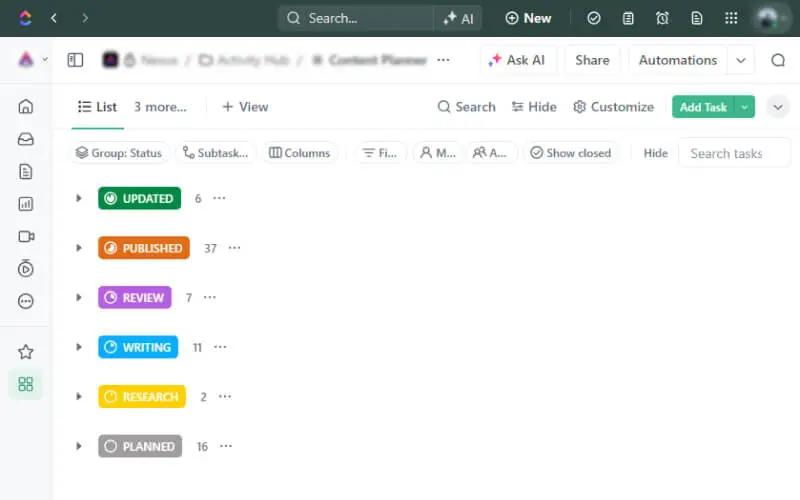
- Basecamp: Basecamp centralizes all content planning activities, providing a straightforward dashboard to manage projects. Its Kanban-style boards and real-time communication tools ensure seamless collaboration and efficient tracking of content progress.

- Google Calendar: Google Calendar offers a simple, intuitive platform for scheduling content across multiple channels. Its color-coded calendars and sharing capabilities enhance transparency and organization, making it easy to manage content timelines and team collaboration.
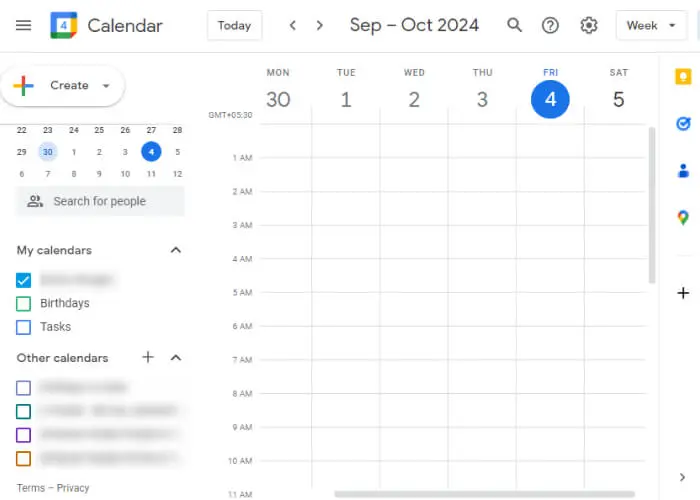
- Asana: Asana's content calendar centralizes deliverable planning, integrating project templates and task dependencies to streamline content creation. It enhances team collaboration and ensures marketing efforts are organized and impactful through clear timelines and stakeholder involvement.
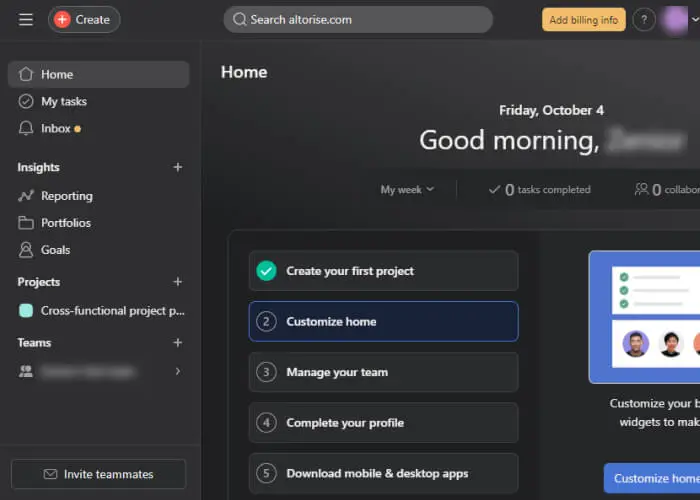
The Godfather to all your content: Search Engine Optimization
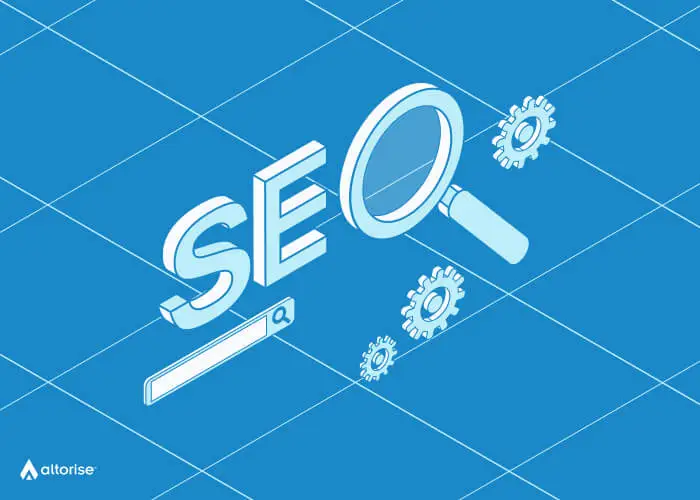
SEO is critical for increasing the visibility and organic traffic of your content. Conduct keyword research to identify terms that your target customer's search intent and publish content using them.
You can increase your website traffic by optimizing your headlines, meta descriptions, and images to improve search engine rankings.
Regularly updating your content with fresh information and maintaining a user-friendly website can also enhance your SEO efforts, driving more organic traffic to your site.
By integrating these elements into your SaaS content strategy, you can create a comprehensive plan that not only attracts and educates your audience but also converts them into loyal customers.
A few keyword research tools that help you manage your content have been listed below;
- Ahrefs: Ahrefs excels in competitor analysis and backlink tracking, providing comprehensive insights into your competitors' strategies and your own site's backlink profile. Its Site Audit tool helps identify and fix over 140 SEO issues, ensuring optimal site performance.
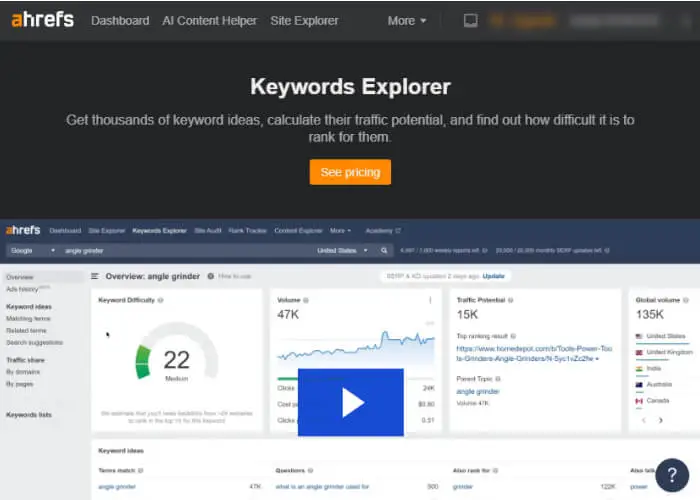
- Semrush: Semrush offers a robust suite of tools for keyword research, on-page SEO, and competitor analysis. Its content marketing toolkit helps develop data-driven content strategies, while its rank-tracking feature monitors daily keyword performance.
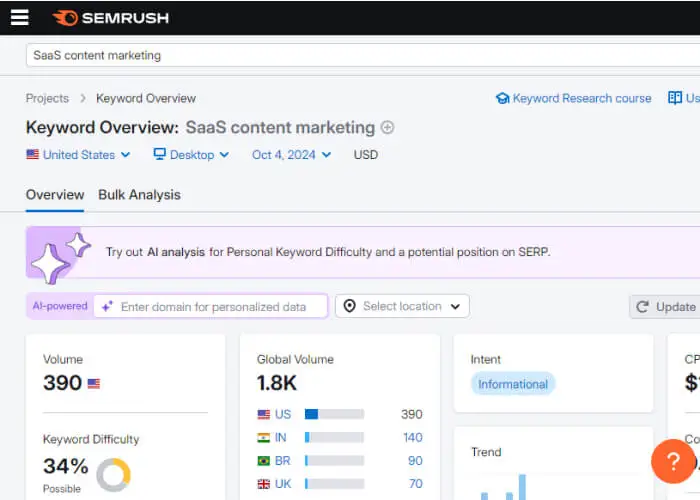
- SE Ranking: SE Ranking provides accurate keyword tracking and comprehensive site audits. Its user-friendly interface and affordable pricing make it ideal for agencies and small businesses looking to optimize their search engines' efforts efficiently.

- SurferSEO: SurferSEO specializes in on-page optimization, offering a Content Editor that integrates with NLP to enhance content relevance and readability. Its intuitive interface and AI-powered recommendations streamline the content creation process, ensuring high search engine rank.

Conducting competitor analysis
Studying your competitors is essential for understanding your brand positioning, which is crucial for a successful SaaS content marketing strategy. This knowledge helps you identify industry gaps where your product can excel, giving you a competitive edge. Analyzing competitor's content strategies, strengths, and weaknesses allows you to refine your approach and differentiate your offerings.
By creating content centered around insightful analysis, you can establish your brand as a thought leader, build trust with your audience, and attract more qualified leads.
Evaluating content distribution channels
Finding out which are the content distribution channels where you can find your target audience is crucial. This identification will help you maximize the reach and engagement for your marketing efforts.
And you also want to publish your content where it is valued right?
By understanding channel performance, you can optimize content marketing processes efficiently, create quality content formats, and refine your strategy to improve overall marketing effectiveness and ROI.
Analyzing content effectiveness

Analyzing content is vital for understanding its impact and effectiveness on your marketing campaign.
This will help you identify which content pieces resonate the most with your audience, guiding future content creation and strategy adjustments. By evaluating metrics such as engagement, reach, and conversion rates, you can refine your approach to maximize ROI.
Tools for content analysis;
Website: Google Analytics, Ahrefs, SEMrush
Social Media: Hootsuite, Buffer, Sprout Social
Essential content marketing pieces for SaaS marketing strategy

Earlier in this blog post we discussed the various steps you need to follow before you build your SaaS marketing content, and now it is finally time to bring that knowledge and research into production. We'll now focus on the content marketing pieces that should be part of your strategy.
Optimizing your website
The first impression of your SaaS brand is going to be through your website. Make it a point to launch and polish your website so that it is informative of all the product features, and is visually appealing.
We suggest that your website should be well-designed, user-friendly, and gain brownie points by optimizing it for the search engines.
A few more key points to keep in mind should be clear calls-to-action, comprehensive product information, and easy navigation to guide visitors through the sales funnel.
You can take it a step further by producing fresh content regularly, and also adding a few content pieces such as blog posts and case studies. This will not only help you engage with your audience but also improve search engine optimization.
Creating impactful blog content
The next piece of content is blogs, regular posting will help you showcase your expertise as well as address key industry challenges. By publishing guides, updates, and industry insights, you can demonstrate how your SaaS product solves specific problems. This will also help you have a strong hold on your audience.
You can also consider dividing your blog post content into multiple categories such as product updates, thought leadership pieces, and how-to guides, this will help you cater to different audience segments.
One key insight is going to be that with the higher word count of the blogs, you can achieve better SEO ranking. You can also produce content by doing keyword research, and gain organic traffic for your blog. We have above listed a few tools to make this process smoother for you.
Leveraging video production
Video production is going to be a key content marketing piece that is going to help you communicate complex information and capture attention.
Drafting bucket ideas for video production can help you further your SaaS brand a lot and this bucket can include content such as educational videos, tutorial videos, product demos, and customer testimonials.
Videos will help you enhance user engagement, increase audience retention rates, and drive conversions. It is also much simpler to utilize your video content as they are highly shareable and can be used in blog posts, social media, and marketing emails.
Utilizing customer testimonials
The best trust factor that you can build for your SaaS business is your client testimonials. Testimonials significantly influence potential customer's purchasing decisions.
They build credibility and trust by showcasing positive experiences and success stories featuring your brand. This will play a crucial role in onboarding new clients and giving them a rough overview of the outcomes and benefits they can expect.
You can establish this by incorporating your testimonials into your website, blogs, landing pages, and promotional videos.
Develop a comprehensive support portal
The most crucial part of your SaaS content marketing strategy is going to be your support portal.
When you own a SaaS brand, you can expect your clients to run into difficulties at any given point, having an AI chatbot or a strong FAQ page that helps your clients solve their issues instantly. Your support portal should also have essential information such as accessing resources and troubleshooting guides.
By maintaining and prioritizing customer satisfaction, you can differentiate your SaaS company from the rest and build a long-term relationship with your clients. This also helps in gaining loyal clients leading to repeat business and increased sales.
Implementing email marketing
Email marketing is a cost-effective way to nurture leads, engage existing customers, and promote new features or updates.
By segmenting your email list and personalizing your messages, you can deliver targeted content that resonates with your audience. Regular newsletters, product announcements, and educational content can keep your brand top-of-mind and encourage customer retention.
Email marketing also provides valuable insights into customer behavior and preferences, enabling you to refine your strategy and improve engagement.
Harnessing social media for SaaS growth
Social media platforms have become a very essential marketing inventory. They help you connect with your audience, build brand awareness, and also develop an online community.
By maintaining an active presence on platforms like LinkedIn, X, Instagram, and Facebook, you can engage with potential customers, share industry news, and promote your content. You can dive deeper into which social media platform you can benefit from by doing platform research and competitor analysis as we spoke earlier in this blog.
Social media marketing also allows for real-time interaction and feedback, helping you understand your audience's needs and preferences. Consistent posting and high client interaction can increase your reach and drive traffic to your website.
Utilize your case studies
Case studies are an effective way to demonstrate the real-world impact of your SaaS product. By showcasing detailed examples of how your solution has helped other businesses achieve their goals, you can build credibility and trust with potential customers.
Case studies provide concrete evidence of your product's value and effectiveness, making them a persuasive tool in the decision-making process. They can be shared on your website, in sales presentations, and through email campaigns to highlight your success stories.
Future trends to include in your SaaS content marketing strategy

As the digital landscape evolves, SaaS companies must stay ahead of emerging trends to remain competitive. Here are some future trends to consider:
- Optimization of Content for AI Consumption: As AI technologies become more prevalent, optimizing content for AI-driven platforms will be crucial. This includes using structured data, natural language processing, and machine learning to enhance content relevance and accessibility.
- On-Page SEO: Incorporating primary and secondary keywords, creating cleaner URLs, and optimizing for SERP features can improve your website's visibility as well as search engine rankings.
- Voice Search: With the rise of voice-activated devices, optimizing content for voice search is essential. This involves using conversational language, answering common questions, and focusing on long-tail keywords to capture voice search traffic.
Conclusion
In the ever-evolving landscape of SaaS marketing, content remains king. As we've explored, a successful SaaS content marketing strategy requires a multifaceted approach that goes beyond simply addressing pain points. It involves crafting a clear value proposition, developing detailed buyer personas, and creating diverse content that resonates with your audience at every stage of the funnel.
Key to success is the implementation of a well-structured content calendar, leveraging SEO best practices, and utilizing various content formats including blogs, videos, and customer testimonials. The importance of a comprehensive support portal and effective email marketing cannot be overstated in nurturing leads and retaining customers.
Looking ahead, SaaS companies must stay attuned to emerging trends such as AI-optimized content and voice search optimization. By embracing these strategies and continuously analyzing content effectiveness, SaaS businesses can build strong brand authority, foster customer loyalty, and drive sustainable growth.
Remember, content marketing in the SaaS world is not just about selling a product; it's about building relationships, providing value, and positioning your brand as a trusted industry leader. By implementing these strategies and remaining adaptable to future trends, your SaaS company can thrive in the competitive digital marketplace of 2024 and beyond.
SaaS marketing questions
Frequently Asked Questions
SaaS content marketing primarily focuses on meticulously tailoring your content through the funnel for consistent content creation and optimizing your content distribution that will help you retian, educate and engage your target audience. While traditional marketing focuses on generalized marketing to attract a large sum of audience.
As a SaaS company, you will need to be on top of your SEO game to drive traffic and gain brownie points for search engine rankings. As we've mentioned, content marketing strategies such as video content, blog post, resource guides and post for software updates have proven effective. These content pieces not only help you in educating but also engaging your potential customers.
Common problems that arise with SaaS content marketing as maintaining consistency with your content marketing efforts, and you can overcome this by maintaining a consistent marketing calendar and planning content well in advance. Another way to overcome this is by utilizing project management tool to help align the focus of your marketing teams.
SaaS companies can repurpose content by transforming blog posts into video content, creating social media posts from existing articles, or compiling multiple related blogs into comprehensive resource guides. This enhances the longevity of your content and maximizes the value to drive engagement and lead generation.
The most effective 'Do's' are listed below:
Create quality content that addresses the pain points of your target customers.
Use search engine optimization (SEO) to improve search results and organic traffic.
Implement a promotion and distribution strategy to reach online communities effectively.
Please refrain from these 'Don’t':
Ignore customer feedback and user behavior; understanding these is key for your content strategy.
Overlook the importance of tracking metrics like Google Analytics to evaluate content marketing efforts.
Underestimate the power of email marketing and lead nurturing in the sales funnel for SaaS businesses.


